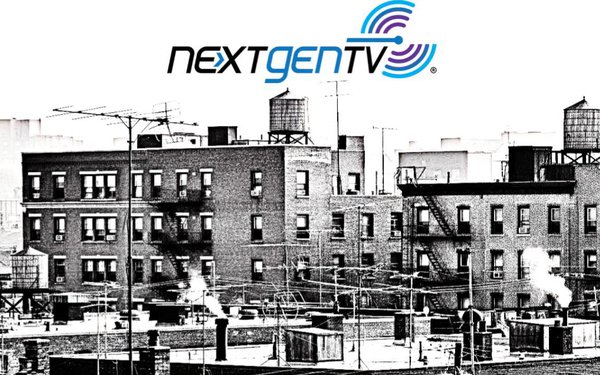
When I first heard about
ATSC 3.0’s promise to revolutionize broadcast television, I brushed it off. Another “breakthrough,” I thought—another rebrand of the same old tech, dressed up to sound
new—legacy broadcasters clutching at straws.
I was wrong.
Despite its potential, most continue to view this initiative as overhyped and impractical, leaving a
potentially globally transformative technology stranded in obscurity.
Tech Jargon Over Human Understanding
ATSC 3.0 has world-changing potential,
but it isn’t easy to understand why. Its name is a clunky acronym for “Advanced Television Systems Committee,” which sounds like a firmware update rather than a revolutionary shift
in how we can use spectrum effectively. Think of “HDTV,” a name so intuitive it instantly conjures sharper, better television in our minds. A name isn’t just a label; it’s a
promise, a story, and a signal to customers and to the market, and “ATSC” offers none of these.
advertisement
advertisement
Its advocates explain that it “brings orthogonal frequency-division
multiplexing “1 and “merges Over-the-Air with Over-the-Top content.”2 This tech-speak buries the real story: ATSC 3.0 is a technology that can save lives when cellular networks
collapse during disasters; it can connect communities without broadband; and ATSC 3.0 can unlock billions in new advertising revenue.
But if the industry, its partners, and our
legislators can’t understand its value, how can they champion it?
The $20 Billion Comeback Plan
Broadcasting has bled $30-40 billion in
revenue from 2015 to 2025, with advertising projected to drop 48% to $32.83 billion this year. ATSC 3.0 could help reverse this slide through location-aware ads that rival streaming’s precision
while leveraging broadcast’s massive reach. Using packet-based transmission, it embeds real-time ad stitching and pinpoints viewers’ locations with centimeter-level accuracy by employing
enhanced GPS signals.
Capturing just 10% of the $200 billion digital ad market could yield $20 billion annually—enough to significantly offset a decade of losses.
Beyond ads, ATSC 3.0 enables datacasting traffic data to connected cars, geolocation for ride-sharing apps, and spectrum leasing for smart cities. Its emergency alerts position broadcasters
as critical infrastructure. This could enable broadcasters to access government funds previously reserved for telecoms.
This isn’t just TV; it’s a new backbone for
connectivity.
The Adoption Paradox: Chicken Or Egg?
I have not seen one memorable ad, social media presence, or influencers breaking down the why
and how of ATSC 3.0.
As of late 2024, only 14 million ATSC 3.0-enabled devices were in American homes. Retail field tests found that most major retailers, including Best Buy,
Walmart, and Target, have no website filtering options to help consumers find NextGen TV models. Sony, Samsung, Hisense, TCL, RCA, and Panasonic all offer TVs with ATSC 3.0 tuners, but at retail,
there is minimal in-store signage, if any, and the sales staff are largely unaware or uneducated about the technology. Due to the lack of advertising and low awareness, consumers are not demanding the
technology.
This scenario creates a chicken-and-egg problem: manufacturers won’t prioritize tuners without consumer demand, but consumers can’t demand what they
don’t understand, can’t easily find in stores, or perceive as having value to them.
The Cost of Poor Communication
The fallout is
stark. As of late 2025, only 40% of U.S. markets have ATSC 3.0 signals, and consumer awareness is near zero. Broadcasters are investing millions to upgrade, but without a unified, human-centered push,
their efforts are invisible. The technology’s potential—crisper visuals, mobile viewing, even datacasting to bridge rural internet gaps—is withering in obscurity.
ATSC 3.0 isn’t just a technical upgrade; it’s a chance to reimagine broadcast TV. But until its marketing learns to speak to people, it’ll remain a great idea no one
understands.